Hovering Above Zero: The Coldest Place in the Universe
At an unthinkably chilly -457.87 degrees Fahrenheit (-272.15 degrees Celsius), the Boomerang Nebula is almost at the limits of thermodynamics. This cloud of gas around a dying star is far more frigid than our solar system’s coldest worlds, like Triton and Pluto, and it is even colder than the faint cosmic afterglow left over by the Big Bang. It is, in fact, the coldest location in the known universe. But what created this cosmic icebox? And what does it mean to be so cold, anyway?
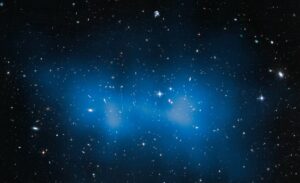
Technically speaking, there is no such thing as “cold.” There are only varying amounts of heat. As the temperature of a substance increases, its particles wiggle around faster. As it decreases, the particles slow down. At the coldest theoretical temperature—absolute zero, equivalent to –459.67 degrees Fahrenheit (-273.15 degrees Celsius, or 0 Kelvin)—atoms would come to a complete standstill, frozen perfectly in place. The Kelvin temperature scale is calibrated from this limit; its increments are almost identical to the Celsius scale, but it is set with its “zero” at absolute zero rather than the freezing point of water. Keep in mind that nothing can ever reach absolute zero, because there is always some residual heat left over. All scientists have managed to do in the lab is get very, very close, with exotic refrigeration methods bringing them within a billionth of a Kelvin.
To reach extremely cold temperatures naturally, way out in space, the first step is to be far from any sources of energy. For example, the closer you are to a star, the hotter it will be. But even in the vast abyss of the universe, light-years from the nearest star, avoiding energy is surprisingly difficult. Throughout the universe, interstellar and intergalactic space is heated by the remnants of the afterglow of the Big Bang—a field of radiation called the cosmic microwave background, or CMB. This is a numbing 2.735 Kelvin, just a hair above absolute zero. Under ordinary conditions, any object floating in space, with no other energy sources, will fall to this temperature as it absorbs energy from the microwave background. To get even colder than that, you need something more than passive cooling.
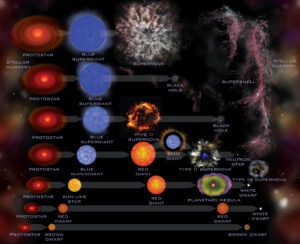
At the limit
This brings us to the Boomerang Nebula. It is a cloud of gas classified as a preplanetary nebula, located 5,000 light-years away in the Centaurus constellation. Excluding the aforementioned lab-created extremes, it is the coldest place in the universe, at just one Kelvin above absolute zero. It’s so cold that the atoms are barely even wobbling.
The nebula was first discovered in 1980 by astronomers Keith Taylor and Mike Scarrott at the Siding Spring Observatory in Australia. They named it the Boomerang Nebula, as it looked boomerang-like in their grainy images. High-resolution observations by the Hubble Space Telescope later revealed it to have a bow-tie shape, and a long-wavelength study in 1995 brought to light its exceptional temperature.
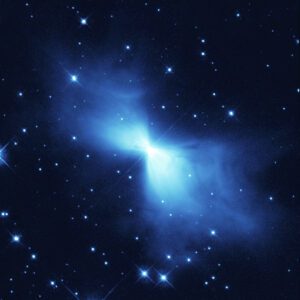
But what is a preplanetary nebula? Let’s start with the planetary nebula—so named because the first ones to be discovered in the late 1700s appeared to be spherical-like planets. Some of the most famous nebulae are planetary; they are formed when a roughly Sun-sized star begins to die and casts off its outer layers of gas, creating bright, multi-colored lobes ionized by the star’s heat.
The preplanetary nebula is just a young planetary nebula. During this phase of the stellar life cycle, the mass ejected from the dying star undergoes rapid expansion, but it has not yet been ionized. This period of stellar evolution is relatively short, lasting only a few thousand years before the emergence of a full-on planetary nebula.
How can it be so cold?
The key to understanding the Boomerang Nebula is the concept of adiabatic expansion. In thermodynamics, an adiabatic process is a change in a system that takes place without exchanging heat with the outside environment. Under this model, all temperature changes are internal, deriving mainly from the expansion and contraction of the system.
One type of adiabatic process is the rapid movement of a gas from an area of high pressure to an area of low pressure. If you’ve ever used a compressed air duster and felt the cold gas coming out, you’ve seen this in action. The propellant is warm inside the canister but cools drastically as it expands. Why does this happen? Cooling occurs because work—not a job, in this case, but energy transferred by a force—is required to pull the molecules away from each other, and this work draws energy—by extension, temperature—from the expanding gas cloud. The gas passes from a low-volume, high-temperature state to a high-volume, low-temperature state, and energy is conserved in the process.
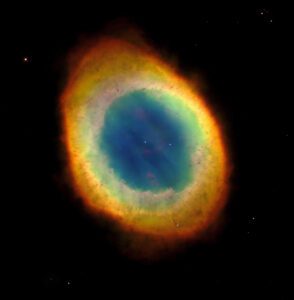
That’s exactly what is happening with the Boomerang Nebula. As the hot outer layers are ejected from the dying star, the expanding gas cools down, in this case dropping to the incredibly low temperature of one degree above absolute zero. It is so cold that it is actually absorbing heat from the cosmic microwave background. When astronomers first observed this phenomenon in 1995, using long-wavelength measurements of infrared radiation, that was what clued them into the nebula’s extreme nature.
But what makes the Boomerang Nebula so much colder than other preplanetary nebulae? Its central star is shedding mass much more rapidly than other similarly sized stars, which makes for a faster expansion of its gas cloud—and, thus, uniquely frigid temperatures. According to Raghvendra Sahai, an astronomer at NASA’s Jet Propulsion Laboratory, the sheer speed on display here suggests that we’re not just seeing the normal shedding of a red giant’s outer layers. Instead, the cause may be the interaction of a smaller companion star.
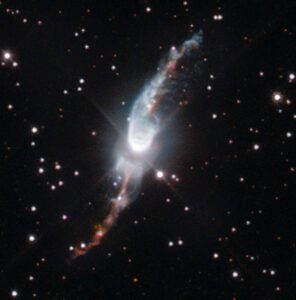
“The only way to eject so much mass and at such extreme speeds is from the gravitational energy of two interacting stars, which would explain the puzzling properties of the ultra-cold outflow,” said Sahai to the National Radio Astronomy Observatory. This indicates that a smaller star may have collided with the dying red giant star, blasting out matter at far greater velocities than normal.
The coldest natural place, period?
The Boomerang Nebula is the coldest place in the universe we’ve discovered outside the laboratory. That’s not to say that it will always hold that title. The universe is a big place, and there may well be other objects that inch just a little bit closer to absolute zero. In 1995, shortly before the Boomerang Nebula’s strange properties came to light, Dr. Raghvendra Sahai predicted the necessary conditions for such low temperatures. The coldest place in the universe had to meet the following criteria:
- An initial large quantity of hot matter.
- Rapid expulsion.
- A very small origin point.
- Plenty of space into which to expand.
The Boomerang Nebula matched up perfectly. It’s entirely reasonable to expect that, somewhere out there in the universe, there will be other instances of stars in similar situations. This is by no stretch of the imagination the only preplanetary nebula in existence. Not even the theorized collision between the central star and its companion will make it unique in the unthinkably huge expanse of space. Perhaps another preplanetary nebula out there is expanding more rapidly, pushing the limits of physics that much further.
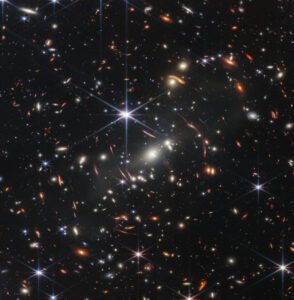
In 2013, the Atacama Large Millimeter Array (ALMA) took more observations of the Boomerang Nebula and found that it is actually warming up. The ejection of the outer layers will eventually stop, an equilibrium will be reached, and in a few thousand years, the Boomerang Nebula will evolve into an ordinary planetary nebula. It’s possible that these pockets of bone-chillingly low temperatures are actually quite common throughout the universe, but they are hidden from us by their fleeting lifespans.
In addition, as the universe ages, the cosmic microwave background temperature will drop. This is a gradual process, but once the universe is double its current age, at around 28 billion years, the CMB will be barely a degree over absolute zero. And given the cooler background, any future preplanetary nebulae will also be colder. If we consider time, not just space, the coldest place in the universe really lies in the future—we’ll just have to wait billions of years.


